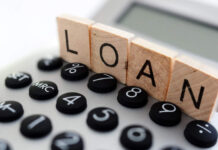With tax season recently behind us, you’ve either had a major payday, or you’ve had to pay up. Whether your wallet is more or less empty post tax season, this time of the year usually has us thinking about our financial goals. If you have a goal of reaching financial stability in 2022, then we have some tips for you to follow.
So, what exactly does being financially stable mean? Financial stability can be defined as having a solid financial foundation in place to ensure that your needs are met, and that you are on track to meeting your goals. However, this is often easier said than done. With record levels of inflation and no improvement to the federal minimum wage, many of us feel further away from financial stability than ever. Not to mention a worldwide pandemic that forced many of us to dip further into our savings then we ever intended. Here are some steps that you can start taking to help yourself get closer to financial stability in 2022.
Create a Monthly Budget
The first step you can take towards achieving financial stability is to create a monthly budget. It is easy to let your finances get away from you without some degree of planning. Many of us feel fear when we have to check out bank accounts. It’s like what we don’t know can’t hurt us and if we don’t look at our account balance, then we are eliminating the stress that surrounds it. But by doing this we are also eliminating our chances at financial stability. If this sounds like you, then creating a monthly budget will help you feel more in control of your bank account.
You can start this process by mapping out the money you are bringing in and what your expenditures are throughout a typical month. Take your monthly income and subtract out your fixed expenses. These will be things that don’t change from month to month like rent, utilities, car and insurance payments and any monthly subscription services. Then factor in things like food, gas, and any household items that need to be purchased each month. Once you have your expenses subtracted then you can start looking at what you would like to put towards savings, investments, or debt payments.
If you struggle with financial planning, some banks like H&R Block have apps that can help assist you with budgeting.
Focus on Eliminating Debt
Debt is something that will continue to push you further from financial stability if you let it. Young people in the United States are no stranger to debt as we are often encouraged to take out loans for large sums of money to pay for school at the ripe age of eighteen. While we can’t go back and undo this, we can prevent ourselves from acquiring any further debt in the future. One of the most common forms of debt besides student loans is credit card debt. While student loan payments are on hold, we recommend focusing on paying off credit card debt. If you are only making minimum payments on your credit card, then you are paying accrued interest on the remaining balance. If your interest charges are larger than your monthly payment, then you are letting yourself get further into debt each month without doing any spending at all. This means instead of making progress paying off your debt, you are just slipping further and further.
If you can get your credit card down to a zero balance, then you will want to make sure it stays that way. Use cash or debt whenever you can and limit your credit usage to things like gas or groceries if you still want to build credit. Never spend more on your credit card than you can pay off in a month to avoid interest charges.
Investing
If you have money sitting in the bank, then you are actually losing between three to five percent of that total balance each year. This is due to inflation. As the rates of inflation rise, the value of your money will lessen. This is why it is important to invest and grow your savings to beat it. There are plenty of different ways to invest all or a portion of your savings. Traditional stocks will always be a good investment option, but alternative means of investment like cryptocurrencies have become a popular option. It is a good idea to have a diverse investment portfolio, so invest in a combination of stocks and cryptocurrencies to keep your portfolio well rounded.
Alternative Revenue Sources
Finding alternative ways to make income on the side can be a great way to help eliminate debt or to have more money for investing. In the past couple years, people have been discovering ways to rely less heavily on their nine to five. Whether it’s through selling goods on Etsy, doing freelance work, or social media posting, many people have been able to improve their finances by finding a side hustle. Have you ever wondered how to make money on tiktok? Because thousands of creators have figured out that the platform is especially great at helping smaller creators profit off their content. And this is a side hustle that will never actually feel like work.
The fall of some small businesses in the past couple of years has opened up the door for other startups to rise in their place. If your alternative source of revenue has turned into a viable business, then make sure you are using a credit reporting service to ensure the financial health of your small company. And if you find yourself asking questions like “what is a cap table?” then don’t be afraid to pull in a financial advisor to help you stay on track as your business grows.
Reaching Stability
Reaching financial stability can be a daunting task for many of us. Especially if you are one of the millions of Americans that live paycheck to paycheck. But if you follow some of the advice listed above, you can start getting closer and closer to reaching your goals.



































































